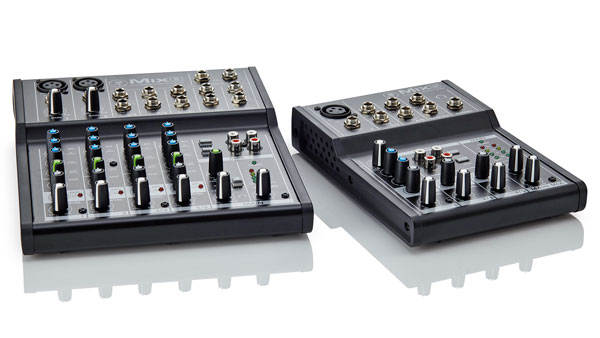MusicRadar Verdict
The Mix 5 is pretty handy if you just need to blend a few sources, and its main advantage is simply its super compact size.
Pros
- +
Performs excellently for the price. Reliable build quality. Ease of use.
Cons
- -
For the money, very little.
MusicRadar's got your back
The Mix 5 is an incredibly straightforward design. It feels solidly made and, unusually for a Mackie mixer, uses an external power supply, which means it's also surprisingly light. Desktop use is also straightforward as, aside from said PSU connector, all audio connectors are on the top panel.
"The output section includes individual Main Mix and Phones level, and there's a four-part LED output meter"
It includes one mic/line channel with two-band EQ, input gain, pan and output level, and two stereo channels handling the other four inputs. These include just output, level and balance.
The output section includes individual Main Mix and Phones level, and there's a four-part LED output meter. Aside from the XLR mic input, all input connections are on TRS jacks for balanced and unbalanced connectivity. There's also a Phones output and Main Outs all on TRS jacks.
All Mix Series mixers include an unbalanced Tape record loop on two pairs of RCAs, and the two selectors allow the Input to be added to the Main Mix signal, or routed as a replacement to the headphone signal.
A quick look at the mic input channel reveals 50dB mic gain (+30dB, -20dB on the line input), high and low shelving EQ (+/-15dB at 80Hz and 12kHz), red overload LED, and permanently active 15V phantom power.
Obviously, success with this last aspect will depend on how choosy your mic is, but we had no problems with a regular pencil condenser; we just needed more gain.
Want all the hottest music and gear news, reviews, deals, features and more, direct to your inbox? Sign up here.
Jon is a London based platinum award winning mixer, producer, composer and club remixer with a diverse CV that spans dance, pop, rock and music for media. He’s also a long term contributor to MusicRadar's music technology tutorials and reviews. Whether working alone or collaborating he usually handles final mixdowns, so you’ll also find MusicRadar peppered with his handy mixing tips.

